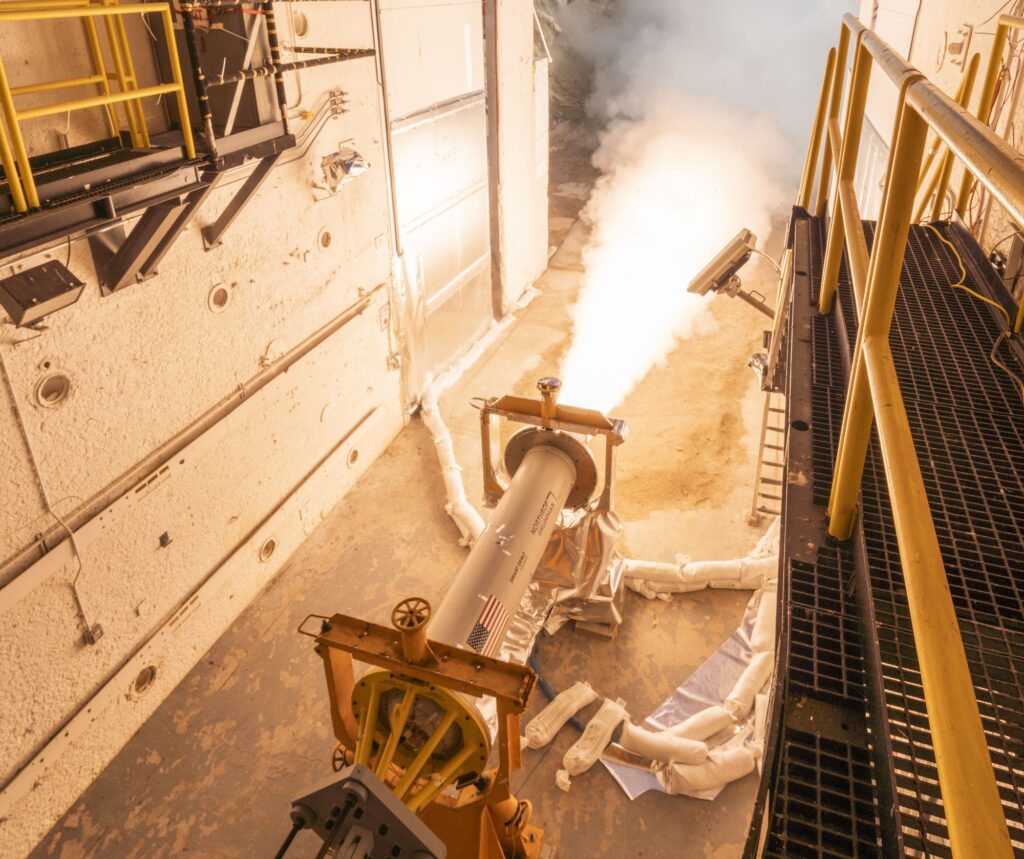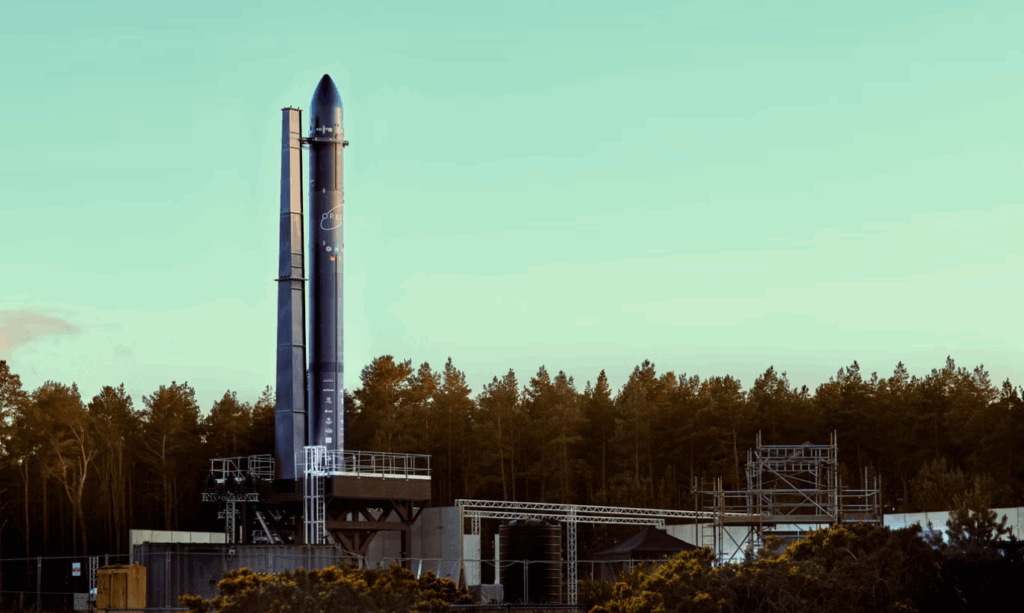Now Reading: China expands Guowang constellation, Galactic Energy suffers Ceres-1 launch failure
-
01
China expands Guowang constellation, Galactic Energy suffers Ceres-1 launch failure
China expands Guowang constellation, Galactic Energy suffers Ceres-1 launch failure

HELSINKI — China conducted a pair launches late Sunday, adding to the national Guowang megaconstellation, but also suffering the failure of a Ceres-1 commercial solid rocket.
A Long March 12 rocket lifted off at 9:41 p.m. Eastern, Nov. 9 (0241 UTC, Nov. 10) from the coastal Hainan commercial space launch center, rising into an overcast sky. The Shanghai Academy of Spaceflight Technology (SAST) confirmed launch success, revealing the mission to be the 13th batch of satellites for the national Guowang megaconstellation.
It was the third launch of the Long March 12, just under a year after the rocket’s debut flight, Nov. 30, 2024, and the second carrying satellites for Guowang. China did not disclose the number of satellites aboard Sunday’s flight. The previous Long March 12 launch carried nine Guowang satellites, likely meaning a further nine were added to the nascent constellation, taking the total number of operational satellites in orbit to 104, though numbers may vary depending on the bus used. U.S. Space Force space domain awareness tracking will later catalog objects associated with the launch.
China plans for the national Guowang project, led by the state-owned China SatNet, to consist of nearly 13,000 satellites in low Earth orbit. It is part of China’s response to Starlink, both commercially and strategically. The near-term target for Guowang is to have 400 satellites in orbit by 2027. So far, the groups have been launched into orbits of around 1,100 kilometers in altitude, with inclinations either 86.5 degrees or 50 degrees. NOTAMs indicate Sunday’s mission will be the latter.
Little is known about Guowang satellites, with no details nor images having been published. The lack of transparency and interpreted size of the satellites, given their numbers and payload capacity of the launchers used, has led to speculation that the satellites have capabilities beyond that of communications.
The satellites have largely been built by the China Academy of Space Technology (CAST), with the Shanghai Engineering Center for Microsatellites and private satellite maker GalaxySpace also involved. It was not clear at the time of reporting which outfit had provided the satellites for Sunday’s launch. The 12th batch launched Oct. 16 (UTC) on a Long March 8A rocket from the same spaceport.
The kerosene-liquid oxygen Long March 12 can carry a payload of 12,000 kilograms to low Earth orbit (LEO), and 6,000 kg to sun-synchronous orbit (SSO), according to SAST. A reusable version named the 12A, with significant changes including methane-liquid oxygen engines, is expected to have a test flight in the near future, following a first stage launch and landing test in January.
Ceres-1 failure
Following this, Chinese commercial company Galactic Energy conducted its own launch later on Sunday.
A Ceres-1 solid rocket lifted off at 11:02 p.m. Eastern (0402 UTC, Nov. 10) from the Dongfeng Commercial Space Innovation Test Zone at Jiuquan Satellite Launch Center, part of the Gobi Desert launch complex being opened to commercial operators. Confirmation of launch success did not come in the standard time, with Galactic Energy later announcing that the launch ended in failure.
“510 seconds after the fourth stage ignition, the rocket shut down prematurely due to an anomaly, failing to deliver the satellite into orbit. The launch mission was a failure,” the statement read. “The specific cause is under further analysis and investigation.”
The four-stage Ceres-1 rocket was carrying the Jixing Platform 02A04 satellite and the North China University-1 satellite, according to state media Xinhua.
Sunday’s mission was the 22nd launch and the second failure for Galactic Energy, following the loss of a mission in September 2023. It is unclear if this will impact the scheduling of the first launch of the larger Ceres-2 solid rocket, with indications of a launch attempt scheduled Nov. 15.
Galactic Energy also conducted Nov. 4 a hot fire test of the first stage of the Pallas-1 kerolox rocket ahead of a first launch. The test was conducted at test facilities at the Eastern maritime spaceport at Haiyang, but Pallas-1 will launch from the Dongfeng Commercial Space Innovation Test Zone at Jiuquan. The company had secured $336 million in September in one of the largest funding rounds so far for a Chinese launch company, with the funding going towards new Ceres and Pallas rockets.
The Sunday missions were China’s 71st and 72nd orbital launch attempts of 2025, and the second failure, following the loss of a commercial Landspace Zhuque-2E rocket in August. Launches 69 and 70 also took place over the weekend, seeing China smash its record for launches in a calendar year, with almost two months remaining in 2025.
Stay Informed With the Latest & Most Important News
-
 012024 in Review: Highlights from NASA in Silicon Valley
012024 in Review: Highlights from NASA in Silicon Valley -
 02Panasonic Leica Summilux DG 15mm f/1.7 ASPH review
02Panasonic Leica Summilux DG 15mm f/1.7 ASPH review -
 03How New NASA, India Earth Satellite NISAR Will See Earth
03How New NASA, India Earth Satellite NISAR Will See Earth -
 04And Thus Begins A New Year For Life On Earth
04And Thus Begins A New Year For Life On Earth -
 05Astronomy Activation Ambassadors: A New Era
05Astronomy Activation Ambassadors: A New Era -
06SpaceX launch surge helps set new global launch record in 2024
-
 07From Polymerization-Enabled Folding and Assembly to Chemical Evolution: Key Processes for Emergence of Functional Polymers in the Origin of Life
07From Polymerization-Enabled Folding and Assembly to Chemical Evolution: Key Processes for Emergence of Functional Polymers in the Origin of Life





















